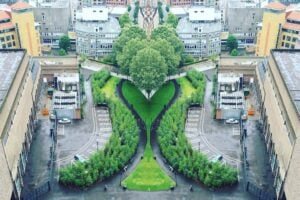A British study has found the brain’s core for the "it hurts" experience. Think of what this could do for people with limited communication abilities, such as people with dementia.
Researchers at the Oxford Centre for Functional Magnetic Resonance Imaging of the Brain used a new brain imaging technique to look at people experiencing pain over many hours. The results, published in the journal Nature Neuroscience, show that activity in only one brain area, the dorsal posterior insula, reflected the participants’ ratings of how much the pain hurt.
‘We have identified the brain area likely to be responsible for the core, ‘it hurts’, experience of pain,’ said Professor Irene Tracey, University of Oxford, whose team made the discovery. ‘Pain is a complex, multidimensional experience, which causes activity in many brain regions involved with things like attention, feeling emotions such as fear, locating where the pain is, and so on. But the dorsal posterior insula seems to be specific to the actual ‘hurt level’ of pain itself.’
‘We were able to find this area by developing a new method of tracking brain activity, based on a technique called arterial spin labelling. This allowed us to look at more complex brain states that stretch over much longer periods. By tracking pain felt over many hours, we were able to filter out more momentary experiences, such as variations in attention or fear,’ said Professor Tracey.
The research team tracked brain activity in 17 healthy volunteers who had a cream containing capsaicin (the active ingredient in chillies) applied onto their right leg, causing a burning sensation. The volunteers indicated how much this burning sensation hurt.
Once the pain sensation began to fade, the researchers ‘rekindled’ the sensation by putting a hot water bottle where the cream was applied. A few minutes later, they provided pain relief by switching to a cooling water bottle. The volunteers’ ratings of how much the pain hurt accordingly went up and then down.
Activity changes in the dorsal posterior insula tracked these changes in the volunteers’ ratings of pain.
The research team plans to verify these results by attempting to switch off this brain region in relevant patients suffering from intractable pain. The team hopes that changing activity in the dorsal posterior insula will help to treat pain where other methods have failed.
This finding could also help detect pain in people with limited communication abilities, such as those in a coma, small children and dementia patients.
A report of the research, entitled ‘The dorsal posterior insula subserves a fundamental role in human pain’, is published in Nature Neuroscience.
SOURCE:
University of Oxford











